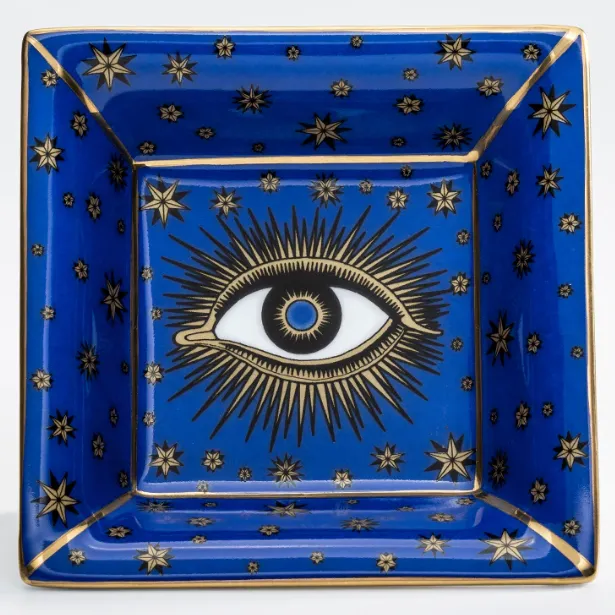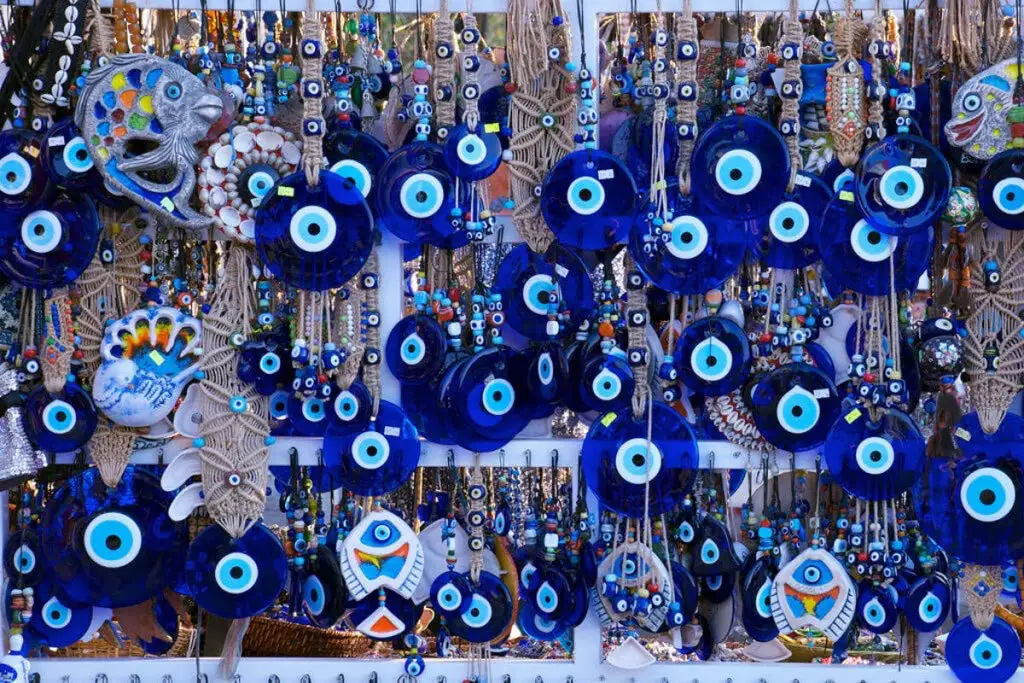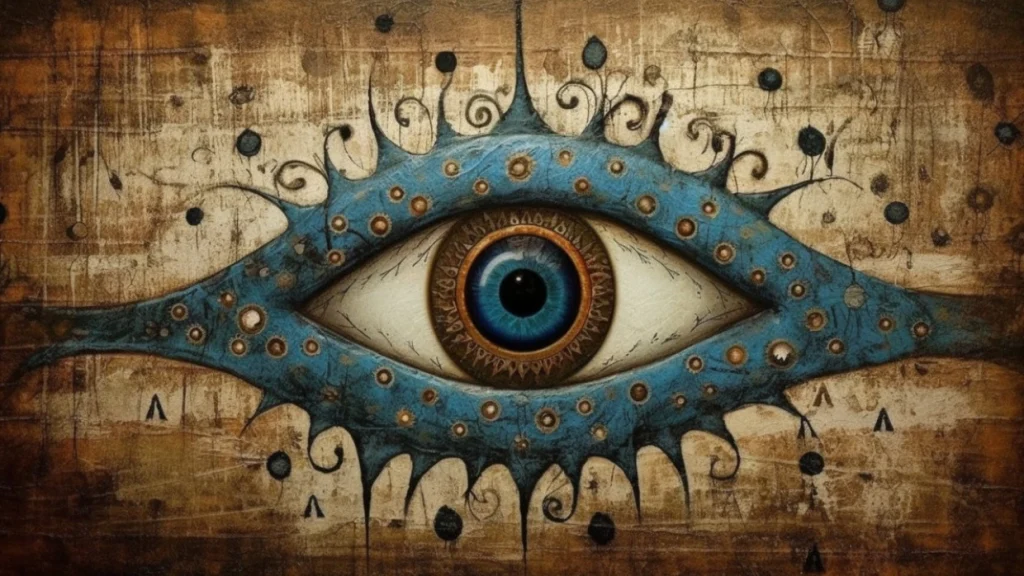The “Curse of the Evil Eye” is a belief and superstition found in various cultures around the world. It is often associated with the idea that someone can cause harm or misfortune to others by looking at them with envy or ill intent. The concept of the evil eye has deep historical roots and can be traced back to ancient civilizations.
Curse of the Evil Eye
- The “Evil Eye” is a superstition believed to cause harm or misfortune to someone through envious or malevolent stares.
- It is represented by the symbol ?, a talisman created to protect against these harmful glares.
- Wearing the evil eye emblem as a form of protection varies in acceptability based on cultural and religious perspectives.
- The evil eye concept is present in various religions and cultures, each interpreting its significance and countermeasures differently.


Understanding the Curse of the Evil Eye
To unravel the threads of the evil eye curse, we must first understand the foundation upon which the belief is built. The curse is enrooted in the idea that envy or a covetous gaze can bring about ill fate or harm to an unsuspecting individual. Not confined to one culture, this belief traverses through various societies, history, and religions.
What is the Evil Eye Curse?
The evil eye curse isn’t simply a look; it’s thought to be a potent malicious force projected through a glare filled with jealousy or ill-will. Those who believe in the curse think that this deleterious energy can result in misfortune, sickness, or even more dire consequences.
The Enigmatic Curse of the Evil Eye? Symbol
At the heart of this lore lies the ? symbol—a representation of the talisman designed to deflect the curse. Amulets, charms, and jewelry frequently bear this symbol, consisting primarily of a blue eye. Recognized globally, this emblem serves not only as a protective ward but also as a popular decorative element reaching far beyond its traditional purposes.
Read More: Am I Cursed?
Cultural Perspectives on Wearing the Evil Eye
Adorning oneself with the evil eye talisman steps into diverse cultural interpretations. In some communities, it is embraced and integrated into daily attire as a safeguard. However, there are places and people who view wearing the evil eye as culturally insensitive or inappropriate, urging a respectful understanding of its roots.
The Evil Eye Across Religious Beliefs
Religion plays a pivotal role in the belief and counteraction of the evil eye curse. From Islam’s mention of it in the Hadith to Judaism’s Kabbalistic amulets and Christianity’s use of the symbol in certain rituals, the evil eye navigates through theology and mysticism. Coupled with its presence in Hinduism, Buddhism, and other spiritual beliefs, the evil eye’s reach is both vast and intricate.
Fighting the Curse: Protection Practices
Encompassing an abundance of customs, various cultures deploy measures to protect against the evil eye. These strategies range from incantations and prayers to the use of specific objects like the hamsa hand, red strings, or reflective surfaces. People often invoke divine assistance or engage in ritualistic behaviors to fortify themselves against potential harm from envious gazes.
People also ask
What does the evil eye curse mean?
The evil eye curse is a superstition that a malevolent glare, often driven by envy, can cause bad luck or harm to the individual at whom it is directed. The curse is widely recognized across cultures as a harmful impact one person can have on another based on negative thoughts or feelings, typically jealousy.
What does the ? mean?
The ? symbol is emblematic of the protective talisman known as the evil eye amulet. It often features a striking blue circle or globe resembling an eye, which is believed to ward off the malign effects of the evil eye curse. This symbol has been used for centuries as a protective measure in various cultures.
Is it wrong to wear the evil eye?
Whether or not it is wrong to wear the evil eye depends on individual beliefs, cultural background, and intention. For some, it’s a protective amulet and a fashionable accessory. Others might see it as cultural appropriation or disrespectful. It’s advisable to understand and respect the origins and significance of the symbol before choosing to wear it.
What religion is the evil eye?
The evil eye is not the domain of a single religion but is acknowledged among many, including Islam, Judaism, Christianity, Hinduism, and Buddhism. Each religion and culture interprets the concept differently, providing unique methods to protect against or cure the effects of the believed curse.


Did You have experiences with the Curse of the Evil Eye?
Do you have experiences or questions about the curse of the evil eye? Share your stories and inquiries, and let’s explore this fascinating subject further together. Understanding cultural nuances and respecting differing perspectives is essential as we delve into these ancient and enduring beliefs.
Join us in uncovering the mysteries of the evil eye, its historical roots, modern expressions, and its place in contemporary society. Whether you’re looking to ward off negative energy or simply curious about this enigmatic symbol, we welcome your contribution to the conversation.

